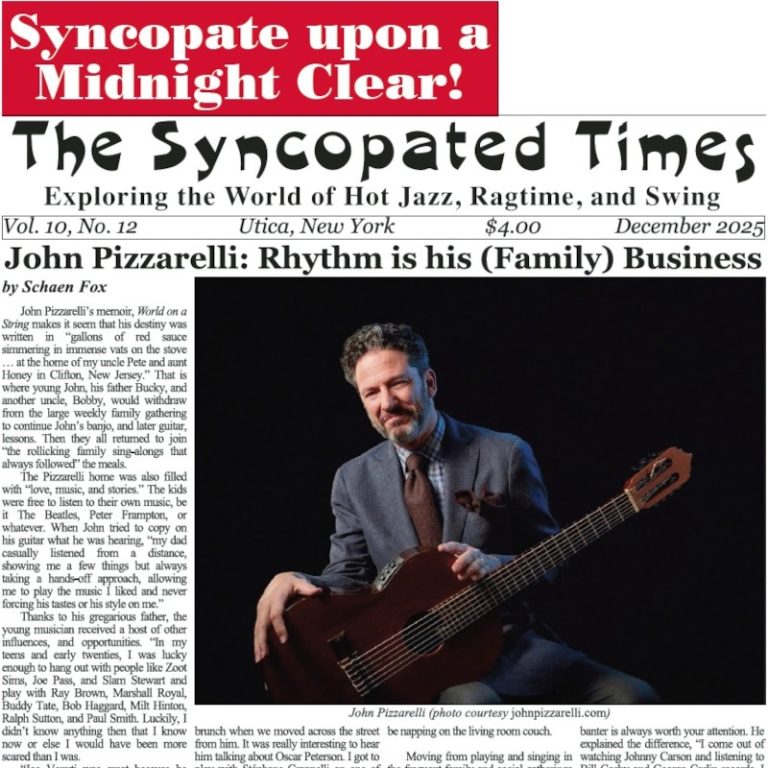The Grammy Awards telecast doesn't offer much for jazz fans, particularly not for fans of early jazz styles. But there are a couple of winners announced earlier in the day that a few or our friends will be refreshing their browsers to see. Two categories in particular are annually of syncopated interest, they are #67 Best Album Notes and #68 Best Historical Album. That's a bit down the chain from Best Album but a nomination can mark the culmination of years of effort.
Each year two Record Labels dominate these categories, Bryan Wright's Rivermont Records, and Rich Martin and Meagan Hennessey's Archeophone Records. While Rivermont has a jazz orientation and records new Jazz and Ragtime artists as well as highlighting figures from the '20s and '30s, Archeophone has a broader focus on early recordings, including those from the fragile brown wax cylinder era of the 1890s.
This year Archeophone has nominations for three important albums. Perhaps their greatest honor is a Best Historical Album nomination for Celebrated, 1895-1896. It's an LP only release of newly discovered cylinder recordings by The Unique Quartette, an early black touring group. The Quartette's members included many important figures in early African American music from the 1880s into the 1900s, including Charles A. Asbury the banjoist subject of an earlier Archeophone release. This LP is beautifully packaged, with
You've read three articles this month! That makes you one of a rare breed, the true jazz fan!
The Syncopated Times is a monthly publication covering traditional jazz, ragtime and swing. We have the best historic content anywhere, and are the only American publication covering artists and bands currently playing Hot Jazz, Vintage Swing, or Ragtime. Our writers are legends themselves, paid to bring you the best coverage possible. Advertising will never be enough to keep these stories coming, we need your SUBSCRIPTION. Get unlimited access for $30 a year or $50 for two.
Not ready to pay for jazz yet? Register a Free Account for two weeks of unlimited access without nags or pop ups.
Already Registered? Log In
If you shouldn't be seeing this because you already logged in try refreshing the page.




